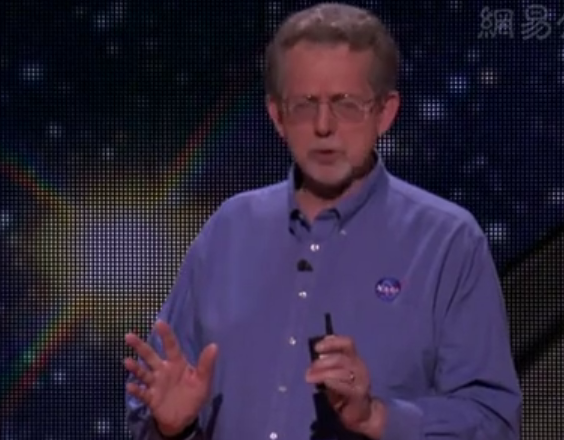And in fact, Curiosity -- which has been roving on the surface now for about three years --
事实上,好奇号探测车,在火星表面上漫游已经有三年了
has really shown us that it's sitting in an ancient river bed, where water flowed rapidly.
我们看到它停在一条古老的河床上,那里曾有过湍急的水流。
And not for a little while, perhaps hundreds of millions of years.
时间还不短,可能曾持续过数亿年之久。
And if everything was there, including organics, perhaps life had started.
如果所有要素都存在,包括有机物在内,也许生命曾在那里诞生过。
Curiosity has also drilled in that red soil and brought up other material.
好奇号还在红土上打了洞,并且发现了其他物质。
And we were really excited when we saw that.
我们看到后非常兴奋,
Because it wasn't red Mars, it was gray material, it's gray Mars.
因为那不是红色的物质,而是灰色的,火星地表下面是灰色的。

We brought it into the rover, we tasted it, and guess what?
我们把挖出来的东西带回探测车,仔细地分析了它,你们猜怎么着?
We tasted organics -- carbon, hydrogen, oxygen, nitrogen, phosphorus, sulfur, they were all there.
我们分析出了有机物--碳,氢,氧,氮,磷,硫,统统都有。
So Mars in its past, with a lot of water, perhaps plenty of time,
所以过去的火星曾有很多的水,也许存在过很长时间,
could have had life, could have had that spark, could have grown.
可能有过生命,可能有过生命的火花,还可能繁衍过一段时间。
And is that life still there? We don't know that.
那时候的生命还在么?我们不知道。
But a few years ago, we started to look at a number of craters.
但是几年前,我们开始观察一些陨石坑。
During the summer, dark lines would appear down the sides of these craters.
在夏季,陨石坑的边沿会出现深色的线条。
The more we looked, the more craters we saw, the more of these features.
随着我们观察得越多,看到的陨石坑越多,这样的特征也越多。
We now know more than a dozen of them.
现在已知的已经超过十二个了。












